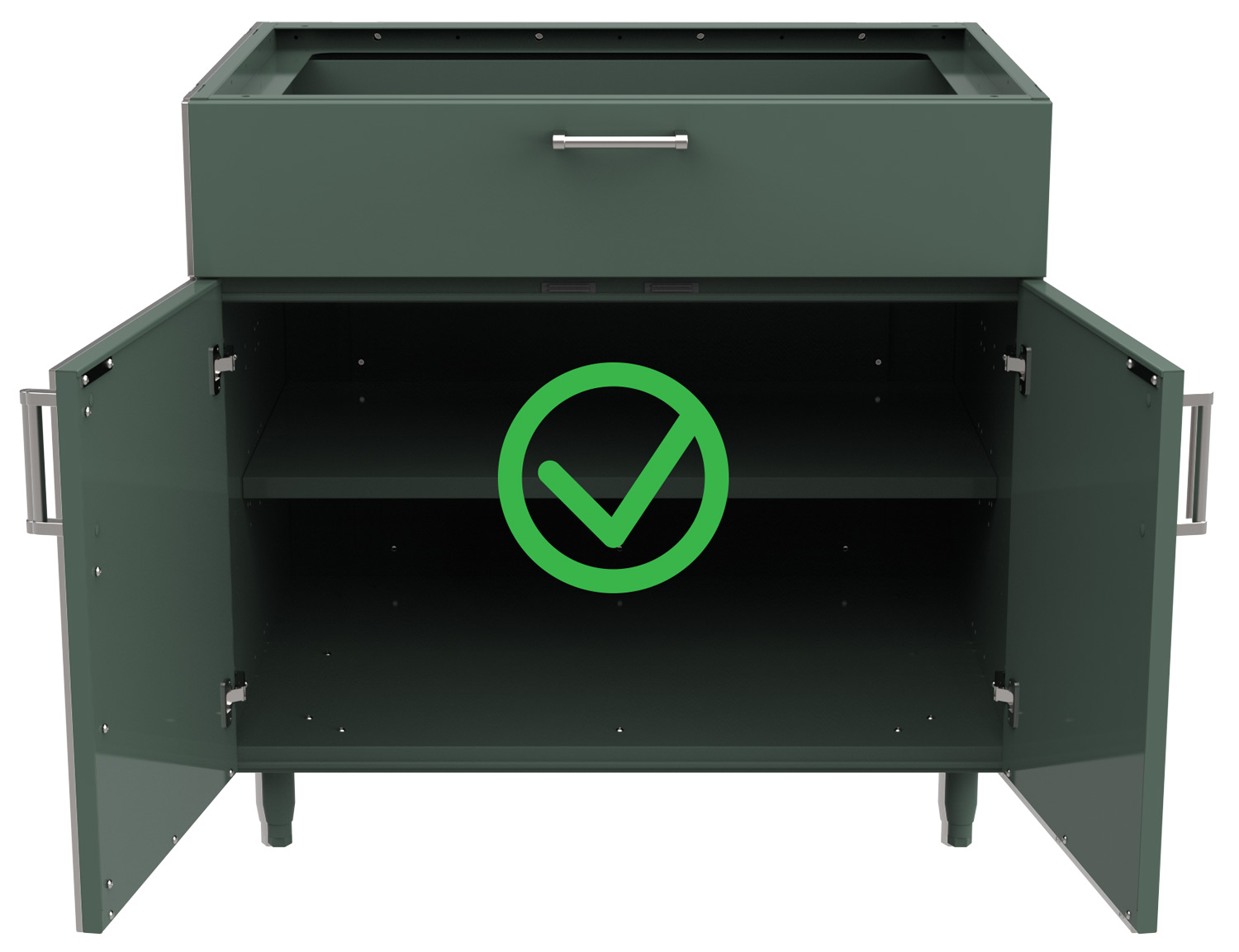Powder coating is a dry finishing process where a powder composed of pigments, resins, and other additives is electrostatically applied to a surface and then cured under heat. The result is a smooth, uniform, and durable finish that resists chipping, fading, and corrosion. This is why we choose this finish option for our stainless steel and aluminum metal cabinets.
Routine Cleaning
Keeping your powder-coated surfaces clean not only enhances their appearance but also prevents buildup that can degrade the finish over time. This is especially important for outdoor kitchens.
✓ Dusting
Use a soft, dry cloth or a feather duster to remove loose dust and debris.
✓ Wash with Mild Soap and Water
For deeper cleaning, use a mixture of mild dish soap and lukewarm water. Gently scrub the surface with a soft sponge or cloth.
✓ Rinse Thoroughly
Use clean water to rinse away any soap residue to prevent streaks or spotting.
✓ Dry Completely
After cleaning, dry the surface with a soft, lint-free cloth to avoid water spots.
Handling Stubborn Stains
For tougher stains like grease or oil:
✓ Spot Clean with Mineral Spirits or Isopropyl Alcohol
For greasy or oily substances, use isopropyl alcohol or a mild white spirit without aromatic compounds (milder mineral spirit). Always rinse thoroughly after use.
✓ The Use a Specialized Cleaner
There are cleaners designed specifically for powder-coated surfaces, however only pH-neutral detergents (pH 7) should be used. Always test a new cleaner on an inconspicuous area, such as underneath a base door, before applying it to the entire surface.
Temperature Considerations:
- Cleaning agents and water should not exceed 77°F (25°C).
- Ensure the surface temperature is below 77°F (25°C) during cleaning to prevent damage.
Avoid Harsh Cleaners
Certain cleaning products can damage the powder-coated finish:
⊗ Abrasive Cleaners
Do not use scouring pads, steel wool, or abrasive sponges.
⊗Harsh Chemicals
Do not use bleach, ammonia, strong acids, alkaline detergents, or cleaning agents with unknown compositions. This includes solvents such as esters (e.g. Ethyl acetate), ketones (e.g. Methyl ethyl ketone), or halogenated hydrocarbons (e.g. perchloroethylene, which is widely used in dry cleaning, trichloroethylene and methylene chloride).
Preventative Maintenance
Clean Off Salt or Chemicals Promptly
For outdoor kitchens, especially near coastal areas, rinse off salt or other corrosive residues regularly.
Avoid Prolonged Water Exposure
Standing water can leave marks or lead to discoloration over time. Wipe up spills immediately.
Protect Against Impact
Avoid dragging or dropping heavy objects into the powder-coated surfaces.
Regular cleaning, avoiding harsh chemicals, and addressing minor wear promptly will keep your powder-coated surfaces flawless for years to come.
Resources and References: Tiger Coatings | Drylac Powder Coating | Stainless Supply

